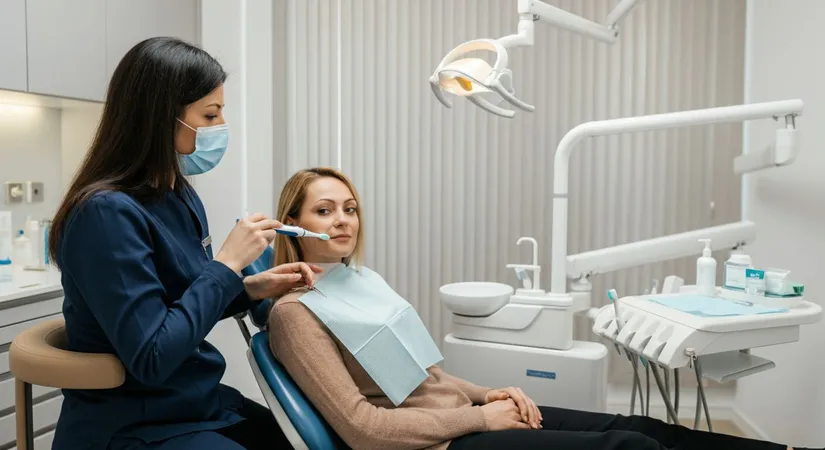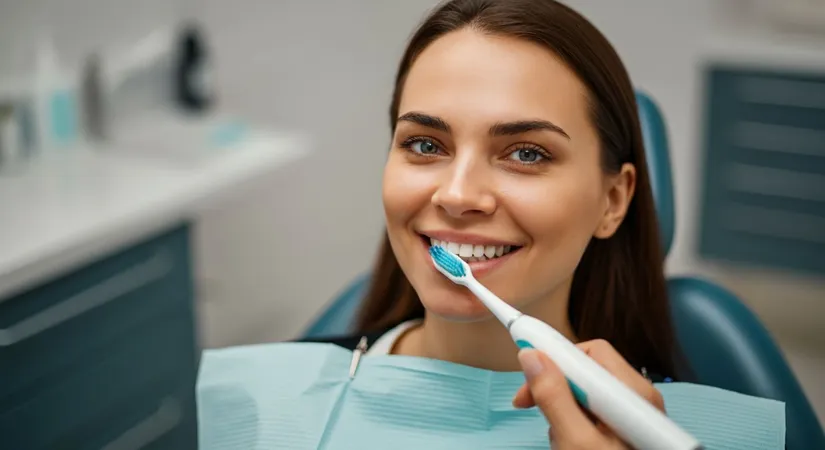Mastering Brushing Techniques for Optimal Oral Hygiene
Explore expert tips on mastering brushing techniques for optimal oral hygiene in our latest health guide.
Maintaining optimal oral hygiene is pivotal for overall health, as it not only influences your smile but also your well-being. Mastering brushing techniques can help prevent dental problems such as cavities, gingivitis, and other oral diseases. In this comprehensive guide, we delve into effective brushing methods, choosing the right toothbrush, and debunking myths surrounding electric versus manual toothbrushes. Let’s make dental care easy and effective!
Choosing the Right Toothbrush for Optimal Dental Care
Understanding Toothbrush Types and Their Benefits
- Manual Toothbrushes: Offer control over brushing pressure and technique, ideal for those with sensitive gums.
- Electric Toothbrushes: Provide consistent brushing motion, beneficial for plaque removal and gum disease prevention.
- Eco-Friendly Toothbrushes: Made from sustainable materials, reducing environmental impact while maintaining oral hygiene.
Steps to Select the Best Toothbrush for Your Needs
- Evaluate Bristle Softness: Choose soft bristles to prevent enamel erosion and protect gum health.
- Consider Brush Head Size: Opt for a size that comfortably fits your mouth, ensuring effective cleaning.
- Check Handle Design: Select a handle that provides a comfortable grip for better control during brushing.

Choosing the Best Toothbrush for Gum Health
Features to Look for in a Toothbrush for Gum Health
- Soft Bristles: Essential for gentle cleaning that protects gums from damage.
- Ergonomic Handle: Ensures a comfortable grip, enhancing control and precision.
- Pressure Sensors: Found in electric toothbrushes, these prevent excessive force that can harm gums.
Steps to Maintain Gum Health with Proper Brushing Techniques
- Use Gentle Circular Motions: This technique helps in effective plaque removal without irritating gums.
- Brush for Two Minutes: Ensures thorough cleaning of all areas, promoting overall oral hygiene.
- Replace Toothbrush Every Three Months: Prevents bacterial buildup and maintains brushing effectiveness.

Electric vs Manual Toothbrush: Which is Right for You?
Evaluating Effectiveness and User Experience
- Electric Toothbrushes: Offer superior plaque removal with minimal effort, ideal for those with limited dexterity.
- Manual Toothbrushes: Provide control over brushing technique, suitable for users who prefer a traditional approach.
- Customizable Features: Electric models often include timers and pressure sensors, enhancing brushing efficiency.
Deciding Based on Personal Needs and Preferences
- Assess Oral Health Goals: Determine if you need advanced plaque removal or prefer simplicity.
- Consider Lifestyle: Choose electric for convenience or manual for portability and ease of use.
- Evaluate Budget and Sustainability: Opt for a toothbrush that aligns with your financial and environmental values.
Plaque Removal Techniques for a Healthier Smile
Innovative Tools for Effective Plaque Management
- Interdental Brushes: These small brushes reach areas between teeth, enhancing plaque removal and preventing gum disease.
- Water Flossers: Utilize water pressure to dislodge food particles and plaque, ideal for those with braces or dental implants.
- Smart Toothbrushes: Equipped with sensors and apps, they provide real-time feedback to improve brushing techniques.
Steps to Incorporate Advanced Plaque Removal Techniques
- Start with Regular Brushing: Use a soft-bristled toothbrush and fluoride toothpaste to clean all tooth surfaces.
- Integrate Interdental Cleaning: Use floss or interdental brushes daily to remove plaque from between teeth.
- Schedule Routine Dental Visits: Regular check-ups help monitor oral health and address plaque build-up promptly.
Innovative Toothbrush Selection for Optimal Oral Health
Selecting the right toothbrush is crucial for maintaining oral health, with options ranging from manual to electric and eco-friendly designs. Each type offers unique benefits, such as manual brushes providing control over pressure and technique, while electric brushes ensure consistent motion for effective plaque removal.
Understanding the nuances of toothbrush types and their benefits demonstrates a comprehensive approach to dental care. This expertise is further supported by detailed guidance on evaluating bristle softness, brush head size, and handle design to meet individual needs.
Advanced Plaque Removal Strategies for a Healthier Smile
Incorporating advanced plaque removal tools such as interdental brushes and water flossers can significantly enhance oral hygiene. These tools are particularly beneficial for individuals with braces or dental implants, offering targeted cleaning solutions.
The integration of innovative tools and techniques into daily oral care routines reflects a proactive approach to dental health. Regular dental visits and the use of smart toothbrushes with real-time feedback further ensure comprehensive plaque management.
Frequently Asked Questions
What are the best brushing techniques for optimal oral hygiene?
To maintain optimal oral hygiene, use gentle circular motions while brushing and ensure you brush for at least two minutes. This technique helps in effective plaque removal and prevents gum disease. Regularly replacing your toothbrush every three months also contributes to maintaining good dental care.
How do I choose the best toothbrush for gum health?
When selecting a toothbrush for gum health, look for soft bristles to avoid damaging your gums. An ergonomic handle can enhance control and precision, while pressure sensors in electric toothbrushes can prevent excessive force. These features collectively support effective teeth cleaning methods and gum disease prevention.
What are the differences between electric and manual toothbrushes?
Electric toothbrushes offer superior plaque removal with minimal effort, making them ideal for those with limited dexterity. Manual toothbrushes provide control over brushing technique, which some users prefer. Both types have their benefits, and the choice depends on personal preferences and oral health goals.
What are some advanced plaque removal techniques?
Advanced plaque removal techniques include using interdental brushes and water flossers. These tools reach areas between teeth and utilize water pressure to dislodge food particles, enhancing oral hygiene. Incorporating these methods into your routine can significantly improve plaque management and support a healthier smile.
How often should I replace my toothbrush?
It is recommended to replace your toothbrush every three months to prevent bacterial buildup and maintain brushing effectiveness. Regular replacement ensures that your toothbrush remains effective in cleaning your teeth and supporting overall oral hygiene.
Discover the Path to 'Healthy Beauty' with estethica! Call now for your free consultation and experience the excellence in aesthetic care.
📞 Call Us Today for a Free Consultation!
Fill in the Form
We call you immediately